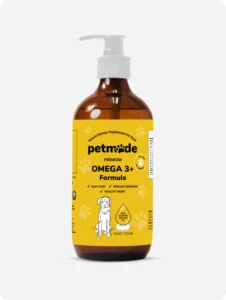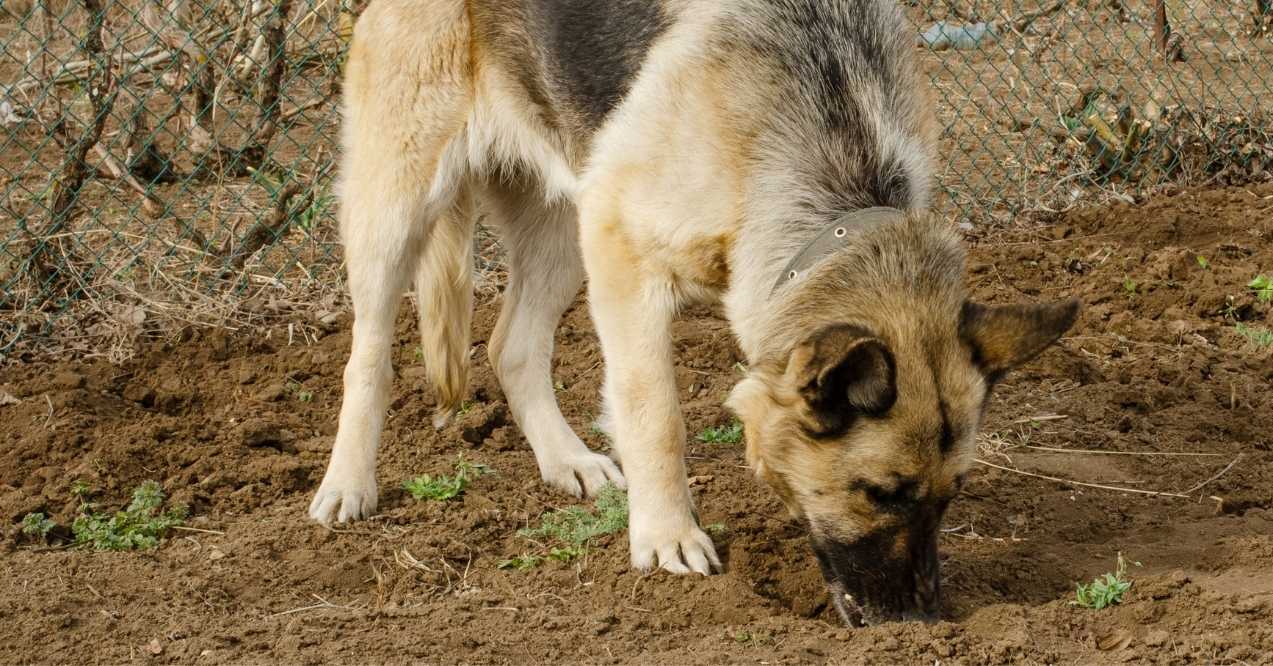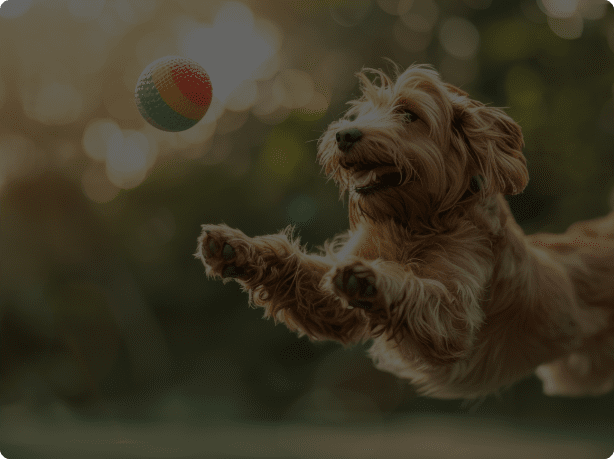Why Is My Dog Lethargic?
You know your dog’s usual energy patterns better than anyone. So when your normally bouncy companion suddenly prefers the couch over their favorite squeaky toy, it’s natural to wonder why is my dog lethargic. That spark that usually lights up during walk time seems dimmed, and their tail-wagging enthusiasm has shifted to slow, measured movements.
While dogs certainly have lazy days just as we do, persistent low energy might indicate your pup needs some extra support. The good news is that lethargy in dogs often has straightforward explanations and simple solutions you can implement at home. This guide will help you recognize when your dog’s slowdown is perfectly normal post-play exhaustion and when it might benefit from some wellness adjustments or professional attention.
What Is Lethargy in Dogs?
What is lethargy in dogs exactly? Think of it as your dog operating at half-speed when they should be at full throttle. Unlike the pleasant exhaustion after a good romp at the park, lethargy persists even after adequate rest. Your dog acting lethargic might skip meals, ignore the doorbell, or show zero interest when you grab the leash.
Normal tiredness follows a predictable pattern – activity, rest, then back to baseline energy. But when your dog seems lethargic for extended periods, they’re showing you that something in their system needs attention. This might manifest as slower responses to their name, reluctance to climb stairs they usually bound up, or choosing to stay in bed when breakfast is served.
The key distinction lies in duration and context. A tired dog perks up after a nap or at the mention of treats. A lethargic dog maintains that low-energy state regardless of their favorite motivators.
Common Reasons for Lethargy in Dogs

Multiple factors can drain your dog’s natural vitality, and recognizing these reasons for lethargy in dogs helps you provide targeted support. Physical exhaustion certainly plays a role, but emotional and environmental factors often contribute just as much. Your dog’s energy levels reflect their overall wellness – from hydration status to mental stimulation levels.
The beauty of identifying these common causes is that many respond well to simple lifestyle adjustments. By observing when and how lethargy appears, you can often pinpoint the trigger and take appropriate action.
Overexertion and Recovery Fatigue
That marathon fetch session at the beach might leave your pup needing more than just an afternoon snooze. Dogs often push themselves beyond their limits during exciting activities, especially in warm weather. This type of exhaustion typically resolves within 24 hours with proper rest and hydration.
Watch for patterns – if your dog consistently crashes after specific activities, you might need to dial back the intensity. Young dogs and seniors particularly benefit from shorter, more frequent activity sessions rather than occasional intense workouts.
Emotional Stress and Environmental Changes
Your dog’s emotional state directly impacts their energy levels. Recent household changes – a new baby, different work schedule, or even rearranged furniture – can leave dogs feeling unsettled and drained. Some dogs internalize stress by becoming withdrawn and lethargic rather than anxious or destructive.
Creating predictable routines and safe spaces helps restore emotional balance. Calming activities such as gentle brushing, puzzle feeders, or quiet companionship often work wonders for emotionally exhausted pups.
Nutritional Deficiencies and Hydration Issues
Energy starts with proper fuel, and inadequate nutrition quickly shows in decreased vitality. Poor-quality food, irregular feeding schedules, or insufficient water intake can leave your dog running on empty. The skin tent test offers a quick hydration check – gently pinch and release the skin between your dog’s shoulder blades.
Well-hydrated skin snaps back immediately, while dehydrated skin returns slowly. Fresh water should always be available, and adding moisture through wet food or bone broth can boost hydration levels. Quality nutrition with balanced proteins, fats, and carbohydrates provides sustained energy throughout the day.
Dog Heart Health and Energy Levels
Your dog’s cardiovascular system acts as their internal energy delivery network. When heart function isn’t optimal, oxygen and nutrients don’t circulate efficiently, leading to fatigue and reduced stamina. Dogs with developing heart concerns often show subtle signs of heart problems in dogs through decreased exercise tolerance before other symptoms appear.
You might notice your usually enthusiastic walker requesting breaks more frequently or breathing faster than normal during mild activities. Daily energy monitoring helps establish baseline patterns, making changes easier to spot. Supporting cardiovascular wellness through appropriate exercise, weight management, and quality nutrition helps maintain consistent energy levels.
Cognitive Fatigue from Mental Under-Stimulation
Boredom can be just as exhausting as overactivity. Intelligent breeds especially need mental challenges to maintain their spark. Without adequate cognitive stimulation, dogs may become disinterested and sluggish, showing lethargic dog signs that stem from mental rather than physical causes.
Rotating toys, teaching new tricks, and providing food puzzles can reignite mental energy. Even five minutes of nose work or hide-and-seek can refresh a mentally tired pup.
Sleep Disruptions and Poor Rest Quality
Quality sleep matters as much as quantity for maintaining energy. Dogs experiencing interrupted sleep from household noise, uncomfortable bedding, or temperature extremes often display daytime lethargy. Unlike exhaustion from activity, this sluggishness comes with irritability and frequent napping that never seems refreshing.
Creating an optimal sleep environment – quiet, comfortable, and consistent – supports restorative rest. Some dogs benefit from white noise machines or cozy cave-style beds that promote deeper sleep cycles.
Signs of Lethargy in Dogs to Watch For
Recognizing signs of lethargy in dogs early allows for prompt intervention. While each dog expresses low energy differently, certain patterns consistently indicate when your pup needs attention. These signals often start subtly before becoming more pronounced.
Physical indicators include:
- Slower walking pace or dragging feet
- Reluctance to jump or climb stairs
- Extended recovery time after mild activity
- Choosing to lie down during normally active periods
Behavioral changes to monitor:
- Disinterest in favorite toys or treats
- Delayed response to commands or their name
- Avoiding social interaction with family members
- Skipping meals or eating with less enthusiasm
Dogs with heart-related energy issues often show exercise intolerance first, stopping frequently during walks or panting excessively after minimal exertion. Tracking these patterns helps you communicate effectively with your veterinary team when needed.
Is My Dog’s Lethargy Normal or a Concern?

Real-life scenarios help distinguish between expected tiredness and concerning lethargy. Context matters enormously when evaluating your dog’s energy levels.
After a Long Walk or Playtime
Post-activity rest is completely normal and healthy. Most dogs need 12-18 hours of sleep daily, with more required after intense exercise. Expect your dog to crash for 2-4 hours after vigorous play.
Normal recovery looks calm and content – your dog rests but responds when called. Concerning signs include inability to settle, excessive panting beyond 30 minutes, or lethargy lasting over 24 hours post-activity.
Post-Vaccination or After Grooming
Mild sluggishness for 24-48 hours after vaccinations is typical as the immune system responds. Similarly, grooming can be emotionally draining, especially for anxious dogs.
Offer quiet comfort and monitor appetite. Most dogs bounce back within a day or two with gentle care and patience.
Hot Weather and Seasonal Lethargy
Summer heat naturally slows dogs down, and this protective mechanism prevents overheating. Dogs may shift activity patterns, preferring early morning or evening exercise.
Provide cooling mats, plenty of water, and shaded rest areas. If lethargy persists in comfortable temperatures or includes symptoms beyond tiredness, further investigation may be warranted.
Simple At-Home Care for a Lethargic Dog
Supporting your lethargic companion starts with addressing basic wellness needs. These dog lethargy treatment approaches focus on gentle restoration rather than forcing activity. Begin with hydration – try ice cubes, low-sodium broth, or water fountains to encourage drinking.
Nutrition plays a vital role in energy restoration. Offer smaller, more frequent meals if your dog is lethargic and not eating normally. Warming food slightly can increase appeal, and hand-feeding provides comfort while monitoring intake.
Mental enrichment without physical demands helps maintain engagement:
- Scatter feeding for gentle nose work
- Lick mats with frozen treats
- Calming music or nature sounds
- Gentle massage or TTouch techniques
Create a recovery sanctuary with comfortable bedding away from household traffic. Maintain regular routines to provide security while allowing flexibility for extra rest. Daily wellness checks – noting eating, drinking, and bathroom habits – help track improvement patterns.
Conclusion
When you notice your dog acting lethargic, your observation skills and quick response make all the difference. Most cases of low energy respond well to rest, hydration, and gentle care at home.
The key lies in knowing your dog’s normal patterns and trusting your instincts when something seems off. Whether addressing nutritional needs, adjusting exercise routines, or creating better sleep environments, small wellness adjustments often restore your dog’s natural vitality. Stay attentive to those subtle signs of lethargy in dogs, provide consistent daily care, and enjoy watching your companion’s energy return to its usual enthusiastic levels.
Offer small amounts of their favorite foods warmed slightly. Try hand-feeding or adding low-sodium broth to increase appeal. Monitor for 24 hours while ensuring hydration.
Yes, cardiovascular function directly impacts energy by affecting oxygen delivery throughout the body. Dogs may show reduced stamina and exercise intolerance as early indicators.
Boredom-related lethargy improves with mental stimulation and engagement. Health-related lethargy persists despite enrichment activities and may include additional symptoms.
Gentle nose work, puzzle feeders, short training sessions, and calm outdoor sniffing adventures can boost energy without overexertion.
Advertisement. This site offers health, wellness, fitness and nutritional information and is designed for educational purposes only. You should not rely on this information as a substitute for, nor does it replace, professional medical advice, diagnosis, or treatment. If you have any concerns or questions about your health, you should always consult with a physician or other health-care professional. Do not disregard, avoid or delay obtaining medical or health related advice from your health-care professional because of something you may have read on this site. The use of any information provided on this site is solely at your own risk.


















